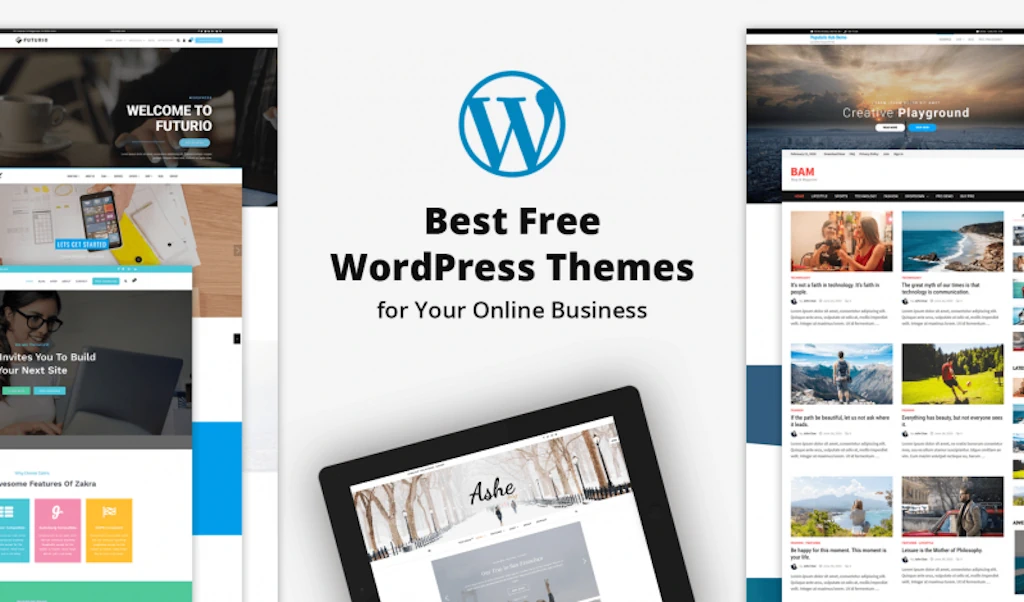Choosing the perfect WordPress theme for your website is a crucial decision that can significantly impact its success. With thousands of themes available, each offering unique design elements and functionalities, navigating the selection process can be overwhelming. To ensure you make the right choice, it’s essential to understand your website’s specific needs, research and evaluate themes thoroughly, and consider factors like customization options, compatibility, user experience, performance, support, and budget. In this guide, we’ll walk you through the essential steps to help you choose the ideal WordPress theme that aligns with your goals and resonates with your target audience.
How to Choose the Perfect WordPress Theme for Your Website
1. Understanding Your Website Needs
Identifying Your Website’s Purpose
Before diving into the realm of WordPress themes, take a moment to ponder why your website exists. Is it a blog, an online store, a portfolio, or a whimsical shrine to your cat? Understanding the primary purpose of your website is key to finding a theme that aligns with your goals.
Considering Your Target Audience
Who’s going to be visiting your website? Are they tech-savvy millennials, distinguished professionals, or maybe even your grandma looking for her brownie recipe? Knowing your target audience will help you choose a theme that caters to their preferences and needs.
2. Researching and Evaluating WordPress Themes
Browsing Theme Directories
Dive into the vast sea of WordPress theme directories like ThemeForest, Elegant Themes, and WordPress.org. Take your time to browse through different categories, styles, and features. It’s like online shopping but for your website’s outfit!
Reading Reviews and Ratings
Just like checking Yelp reviews before trying out a new restaurant, reading reviews and ratings for WordPress themes can save you from potential headaches. Look for themes with positive feedback and high ratings to increase your chances of a smooth-sailing web design journey.
3. Customization Options and Flexibility
Theme Customization Features
Not everyone is a coding wizard, and that’s perfectly fine. Look for themes that offer easy customization options through a user-friendly interface. Being able to tweak colors, fonts, layouts, and more without pulling your hair out is a definite plus.
Integration with Page Builders
If you’re a fan of drag-and-drop simplicity, consider themes that play well with popular page builders like Elementor, Divi, or Beaver Builder. These tools can empower you to design your dream website without getting lost in a maze of code.
4. Compatibility and Responsiveness
Cross-Browser Compatibility
Your website needs to look sharp no matter which browser your visitors use. Ensure the theme you choose is compatible with popular browsers like Chrome, Firefox, Safari, and (gasp) even Internet Explorer for those nostalgia trips.
Mobile Responsiveness
In a world where smartphones rule the roost, having a mobile-responsive website is non-negotiable. Check if the theme adjusts beautifully to varying screen sizes, ensuring that your content shines whether it’s viewed on a desktop, tablet, or phone.
Choosing a WordPress theme for your website doesn’t have to be a daunting task. By understanding your needs, doing thorough research, valuing customization options, and ensuring compatibility, you’ll be well on your way to finding the perfect theme that makes your website pop!
5. User Experience and Design Elements
Design Aesthetics
When choosing a WordPress theme, pay attention to its design aesthetics. Opt for a theme that aligns with your brand and appeals to your target audience. A clean and visually appealing design can enhance the overall user experience.
User-Friendly Navigation
User-friendly navigation is key to ensuring visitors can easily find their way around your website. Look for themes with intuitive navigation menus and clear organization of content to improve user experience and keep visitors engaged.
6. Performance and Loading Speed
Optimized for Speed
A fast-loading website is crucial for user satisfaction and SEO. Choose a WordPress theme that is optimized for speed, with efficient coding and lightweight design elements to ensure quick loading times.
Minimizing Bloat and Unnecessary Features
Avoid themes with excessive built-in features or unnecessary plugins that can slow down your site. Opt for themes that prioritize performance by keeping things streamlined and only including essential features.
7. Support and Updates
Customer Support Channels
Check if the theme developer offers reliable customer support channels such as documentation, forums, or ticket systems. Good support can help resolve any issues that may arise and ensure the smooth functioning of your website.
Regular Updates and Maintenance
Regular updates are essential for security and compatibility with the latest WordPress versions. Choose a theme that receives frequent updates and maintenance from the developer to keep your website running smoothly and protect it from vulnerabilities.
8. Budget and Pricing
Free vs. Premium Themes
Consider whether a free or premium theme best suits your needs. Free themes are cost-effective but may lack advanced features, while premium themes offer more customization options and support for a price.
Consideration of Additional Costs
Factor in any additional costs associated with themes, such as plugins, extensions, or customization services. While investing in a quality theme is important, be mindful of potential extra expenses to stay within your budget. In conclusion, selecting the perfect WordPress theme requires thoughtful consideration and a clear understanding of your website’s requirements. By prioritizing factors such as customization options, compatibility, user experience, performance, support, and budget, you can make an informed decision that enhances the functionality and aesthetics of your site. Remember, your theme is the visual representation of your brand online, so choose wisely to create a professional and engaging user experience for your visitors.
